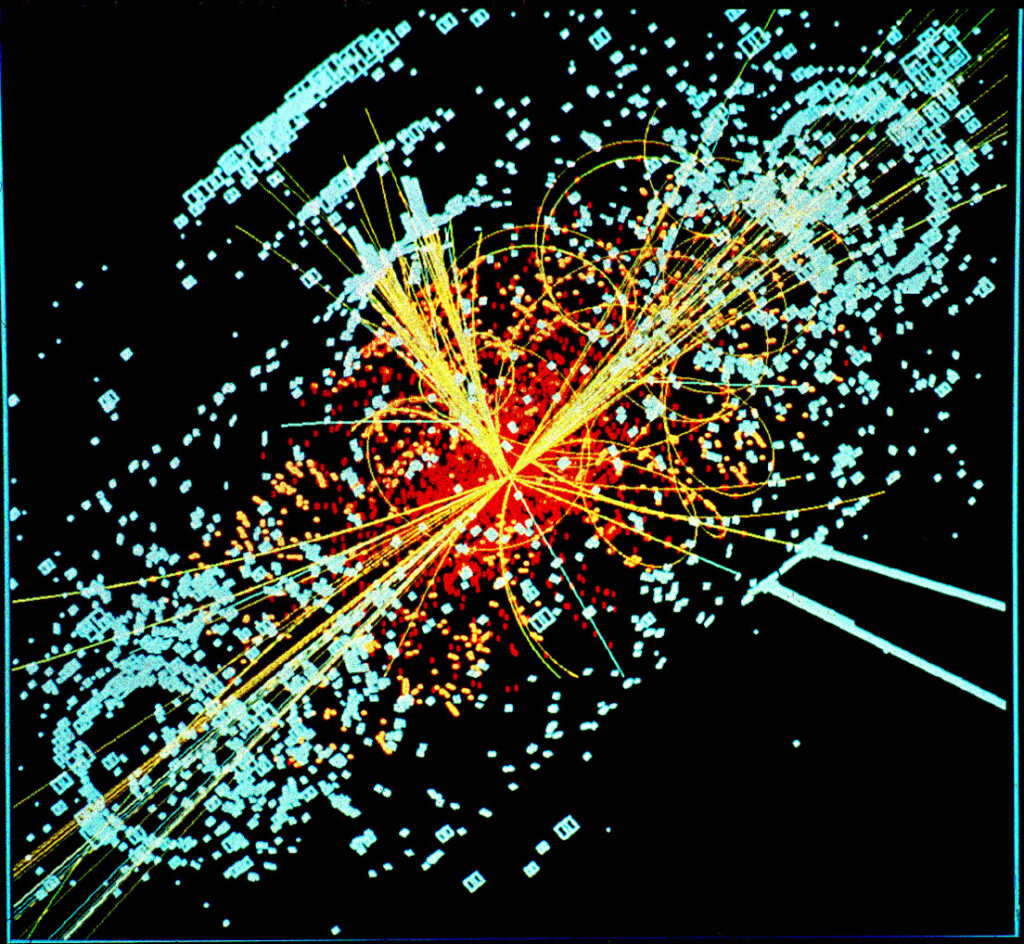Kacey bolted upright in her bed, soaked in sweat and trembling in terror. “What the hell was that about?!” she said to herself. The frightened young woman reached for the notepad she kept on her nightstand ever since she started living on her own, only three short weeks ago. That’s when the “nightmares” first started. Before too much time had passed, Kacey started writing down the details of the dream by emulating her sleep and placing herself back there mentally.
The dream began with what appeared to be tiny specks of light floating aimlessly through a room of cold, frigid darkness. Slowly, they assembled to form a common, swirling mass. Colors came into view; red, green and blue spread throughout the disk. It looked like a galaxy was forming right in front of her! Intrigued, Kacey attempted to walk towards the galactic imitation so she could investigate further but it seemed to stay at a perpetual distance. Perplexed, she closed her eyes. It felt like a dream. She tried to will herself awake.

She opens her eyes again and notices that the galactic imitation has now doubled in size and is spherical. Streams of blue and purple energy jet out from a swirl of yellow and red gas. The dark sphere in the center of it all is pulsing rapidly. Kacey can feel herself being pulled toward the object, no longer remaining at a distance from it. Her attempts to back away from the object are fruitless. As she’s pulled inevitably closer, the object suddenly emits two bright rings of light outward from the sphere. The shockwave rattles her to the bone. The sphere cools off, considerably reduces in size but a feeling of foreboding washes over Kacey. Her intuition proves trustworthy. A third and violent explosion occurs, causing the outer edge of the sphere to expand rapidly. The surface is rapidly, uncontrollably heading directly towards her but escape is impossible. The explosion swallows her up and a fraction of a millisecond afterward, she bolts upright in her bed, soaked in sweat and trembling in terror. “What the hell was that about?!” she asks herself.
Kacey, a 26 year old scientist, was originally from a tiny town on Tethys, but had recently moved to Hyperion to start a career in science. Hyperion was a huge moon of Saturn with one large city with more private areas built in. People from all over the galaxy came here because of its reputation for diversity. There were individuals of all different planetary races, creeds, beliefs and genders. The society is entirely voluntary. Historically, everyone was required to rotate shifts doing jobs considered unpleasant. However, the more scientifically gifted citizens quickly figured out how to automate these tasks, rendering civic chores unnecessary. There is no military, but rather a global lunar defense system which enshrouds Hyperion from incoming missiles and energy weapons. The defense system as well as the chores automata are maintained by volunteers who are interested in engineering. Many young apprentices begin their careers this way. City officials are also volunteers, and have no authority over the people. They are solely responsible for managing lunar infrastructure and occasionally mediating disputes between individuals.
Kacey had spent the last eight years studying under the tutelage of the galaxy-renowned physicist Dr. Shevek who had spent a lifetime working on his theory of General Temporal physics. He had spent many years working in an anarchist colony somewhere in the Tau Ceti system. In between hard labor in the barren desert wastelands, he had made significant progress on unifying Sequence Theory and Simultaneity Theory. The society of his home world did not appreciate or even recognize his scientific genius. Despite his affinity for his home world, he left because he felt like the civilization had become stagnant. Born from revolution, they had settled into a predictability. Ultimately, Shevek decided to seek a world that would embrace change and allow him to pursue his scientific work.
Within Simultaneity Theory there is a probabilistic prediction that abstract ideas arise simultaneously. One notable example of this can be found in Terran mathematics with the Calculus of Newton and Leibniz, discovered simultaneously yet disparately. So, just as predicted by this very theory, the Saturnian University of the Sciences had started a college following the tradition of the chronosophists, a group of philosophers who were interested in the interdisciplinary study of time around the same time as Shevek was wrapping up his initial draft of General Temporal Theory. Shevek sent a manuscript of his theory along with an application for Fellowship. The rest is, ironically enough, in the past. Thirty years after beginning his fellowship, he was still the leading expert on time, although the sequenced sands of time had changed around him. The field had branched off into the study of space-time itself, astrochronology. And young Kacey had been his star pupil.
She was on her own, now, as a scientist in her own right. Her current area of research was interdimensional translational and rotational spatial and temporal kinematics. In short, the motion of both space and time across multiple dimensions. Her work was largely based on the subspace “bulk” communication techniques engineers had discovered in creating a device for instantaneous communication throughout the universe. Dr. Shevek had played a seemingly ironic role in this device, as the engineers had everything they needed to build the device, but could not figure out how to integrate several equations together. He liked to use it as an example of the reversibility of causality, a foundational theorem within Sequence Theory. “These engineers are themselves proof of the existence of causal reversibility. They have their effect, the device, before I even provided the cause: my unified theory!”

In any event, her latest professional work involved quantum mechanical experiments on chronons, a theoretical particle suspected to be responsible for entropy and therefore the passage of time. The apparatus she utilized was humongous. It was larger than any of the particle colliders the Terrans had used on Earth, and required a thousand times more energy, which they harvested from a giant spherical array shared among Saturn and its many moon nations. As large as it was, the only area they were interested in was smaller than the nucleus of an atom.
Pushing the boundaries of knowledge can be a frightening sensation. She knew what she was interested in understanding, but not how to get there. There was no way of knowing whether this way or that way would provide any useful insights. Best case scenario if you take the wrong path is you gain nothing and lose time. In the worst case, you lose your funding, reputation and career. But if you pick right? Experience the scientist’s greatest emotion: discovery. A few billion in galactic currency as a reward is nice, but pales in comparison to the experience of a master artist: completing a masterpiece. So there she sat, day after day. Week after week…Pushing, analyzing, pushing some more. It was tiring work, but she loved it. But was it starting to take a toll on her? She began to think about her recent nightmares.
The dreams always seemed to recur at random, yet had a cyclical nature. A sense of déjà vu was always present; it was as if she kept experiencing the exact same sequence of events. Every time they happened, she attempted to write the dream down. There were usually only a few elements she could concretely remember; everything else was just a feeling. An intuition of something strange happening. Each morning, however, the data pad beside her bed was blank. Was it a dream that she woke up to write it all down? She wondered if her studies were affecting her perception of time – or maybe chronon radiation was responsible for that (“if there even is such a thing,” she rebutted herself).
Every so often, Kacey and Dr. Shevek sat down for a meal together. Shevek was still not totally accustomed to such lavish meals, but enjoyed any opportunity to sit down with a former student turned colleague. Today’s meal was a slow-braised chok yei with an ori glaze, a traditional Saturnian staple. After a few minutes of professional courtesies, Kacey couldn’t help but bring up the dreams.
Shevek was perplexed. He typically did not experience somnolent visions such as these. Although he was not an expert on matters of the brain, he suggested that perhaps these particular unconscious imaginings were attached in some way to General Temporal Theory. “You see, without sequence the world is chaos. In your dream, the star exploding cannot be connected to other moments across time. It follows a linear path. The star cannot explode without first existing. However, according to simultaneity, the star had already exploded when it was initially formed. In other words, the star is always both exploding and not exploding. Our consciousness is what views the illusion of successive moments which we call the present.”
Kacey took a moment to think about the implications. Perhaps the dream was trying to tell her something. Ever since moving to Hyperion, she had been on edge. Constantly anxious about living on this new world. She felt sad about leaving her home world for this one, even though it was great. But many others felt the same way.
“Shevek, do you ever miss your home world?”
“I certainly do. When I first arrived, I felt great sadness for having left behind the world in which I grew up. It was a great place, but it had become stagnant. No opportunity. It no longer worked for me. But this place is full of people who get along, encourage each other to grow, even if they aren’t as comfortable as they used to be. They are doing whatever it takes to make it work. That is why Hyperion is so beautiful to me. And the people who aren’t fit for this kind of lifestyle, they leave…because it is only fair for them to do what it takes for them to be happy. You see, cities like ours do not exist in nature. They are created from within each one of us, so a city like Hyperion emerges from an agreement between our spirits.”
“Hm. Wow, that’s a lot to think about.”
“Sorry for being so verbose.” He paused. “If I may, I think your missing home and feeling so overwhelmed might have a great deal to do with your dreams. Perhaps you need to practice accepting your feelings, instead of fighting them as they begin to engulf you.”
They spoke a while longer until they had to depart to resume working. She thought hard about his suggestion. Perhaps it really was her approach to dealing with her emotions. After all, General Temporal Theory itself says that the decayed past leads to the decayed future. That through memory we access the past, but the living – not the decayed – future is bound to us by intention. And intention is the only way to arrive, for the living future will not arrive on its own.
Don’t forget to read the reflective essay which provides some context to Kacey’s Dream.